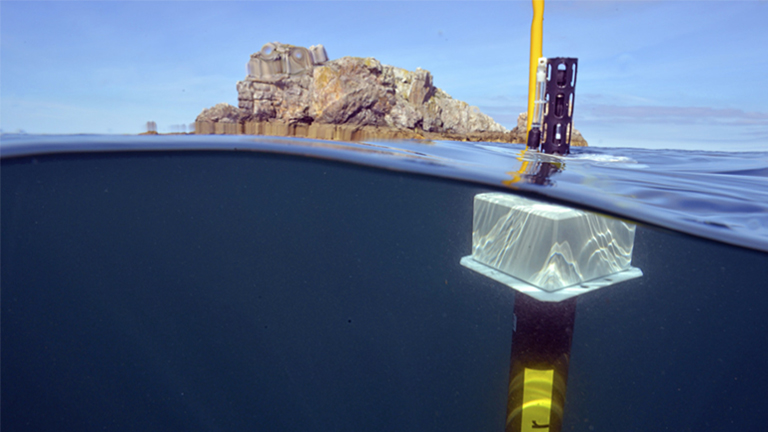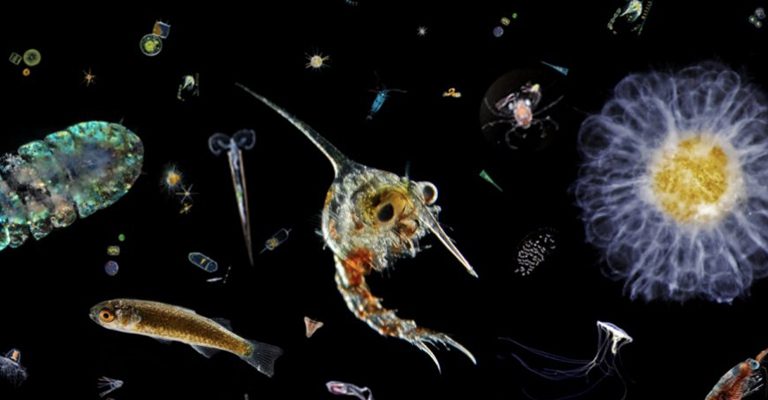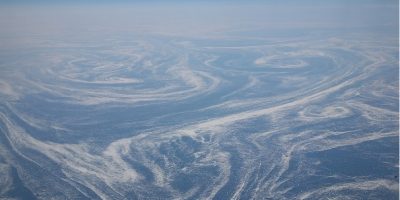Plankton is essential to our survival. It’s the basis of all oceanic food chains, and essential in particular for the presence of the fish on which we feed. But global warming and human exploitation are deteriorating populations. How to know the state of the stocks and assess the impact of the pressures exerted on it? An international team of scientists, led by the Villefranche sur Mer Oceanography Laboratory (LOV, Sorbonne University/CNRS) has gathered, for the first time, a huge dataset on zooplankton acquired by underwater cameras at the global scale.
Plankton is divided into two elements: phytoplankton, the equivalent of grass and trees on earth, and zooplankton, made up of larvae, molluscs, fish, and crustaceans. Organisms threatened by human activity because they are overexploited for the pharmaceutical industry, for the production of animal meal, for aquaculture or for breeding.
Zooplankton largely support the carbon pump of the ocean, i.e. the balance between the natural carbon-producing areas and the areas that absorb it, the “carbon sinks”. In this context, it is therefore useful to understand where the biomass (the quantity) of zooplankton is located, how it is distributed and to better understand its evolution with climate change.
Current monitoring systems, however, only allow population analyzes on the surface at the global level, or in the depths but at the local level. This is why the production of data allowing an overview of the plankton population in depth and at the global level is essential.
International cooperation at the service of plankton
A LOV research group has developed and marketed an in situ digital underwater camera, the “Underwater Vision Profiler 5 or UVP5”. This technology was used by many laboratories around the world, between 2008 and 2019, which made it possible to compile a substantial data set on more than 3,500 sites.
This imaging system is designed to detect, measure and quantify the distribution of zooplankton organisms and marine particles with a diameter between 1 and 50 mm. These are recognition algorithms, using artificial intelligence that make it possible to sort and identify the species present in the images. Here, no less than 466,872 organisms have been classified in this way, based on millions of images!
Subsequently, the authors relied on their knowledge of these species and the carbon biomass they emit, in order to globally predict the biomasses (the actual quantity) of the categories of plankton.
Promising results
The present study, carried out as part of the ongoing thesis of Laetitia Drago from the LOV, aimed to model the composition and oceanic biomass of zooplankton.
The results reveal maximum values of zooplankton biomass around 60°N and 55°S, i.e. in temperate and polar productive zones, as well as minimum values around oceanic gyres (swirling ocean currents). An increase in zooplankton biomass is also predicted for equatorial areas. The global integrated biomass (0-500 m) has been estimated at 0.403 Gigatons of Carbon, equivalent to that of all fish in the ocean!
More precisely, it was largely dominated in the first place by Copepoda, with 35.7%, mainly in the polar regions. Copepods are a group of small, free-living, parasitic crustaceans (external or internal to various organisms), living in seawater and in almost all freshwater habitats. At sea, they form the basis of plankton and fish food. They are followed by Eumalacostraca (26.6%), a subclass of crustaceans, then Rhizaria (16.4%, mainly in the intertropical convergence zone). These are single-celled organisms with a nucleus.
These biomass estimates were associated with environmental conditions (temperature, salinity, nutrients and oxygen, etc.) to build habitat models, i.e. the spatial distribution of organisms according to these environmental conditions. They will make it possible to understand future conservation measures in terms of sustainable fishing but also future studies on these groups, in particular the fragile Rhizaria, which are relatively little studied.
Finally, the next step for the LOV teams will be to equip the autonomous floats of the research laboratories with these underwater cameras, in order to obtain data in regions that are only very rarely visited by expedition boats. This future international deployment will be part of the biogeochemical/ARGO program supported by the United Nations, for the development of a global network of biogeochemical sensors on Argo profiling floats.

Deployment of Argo profilers ©Ifremer – Olivier DUGORNAY
Indeed, the current trend is to add a more realistic representation of plankton into ecosystem models to better predict future ecosystem states and ocean conditions, and to inform sustainable management strategies for climate change mitigation. global climate change.
Source : Frontiers in Marine Science


